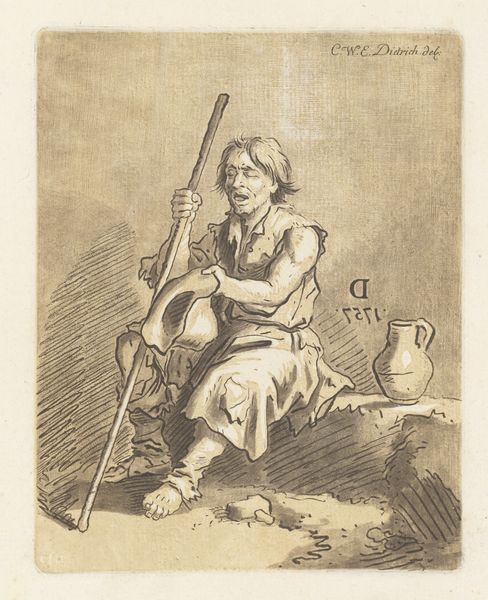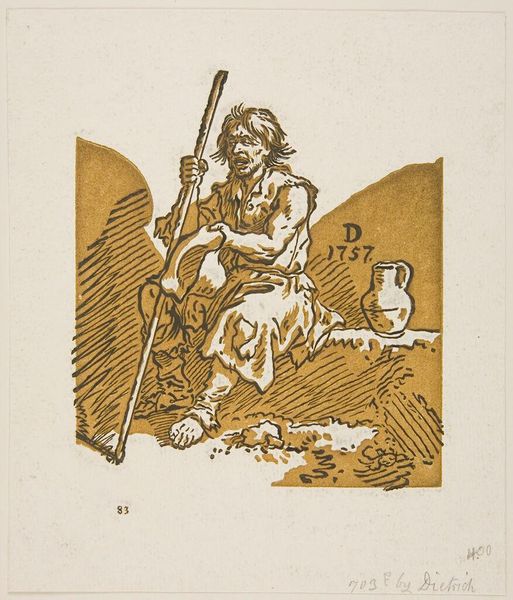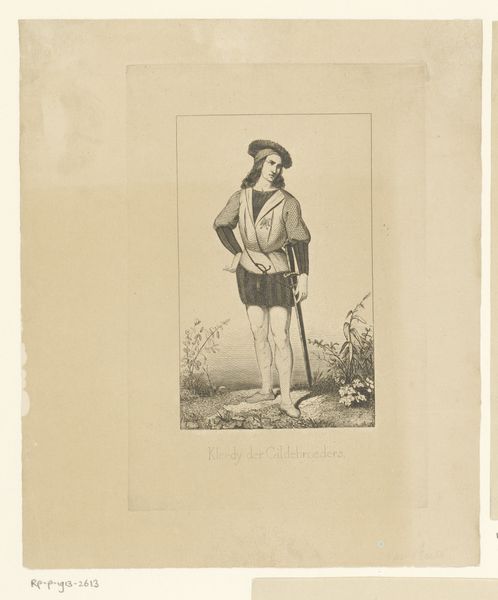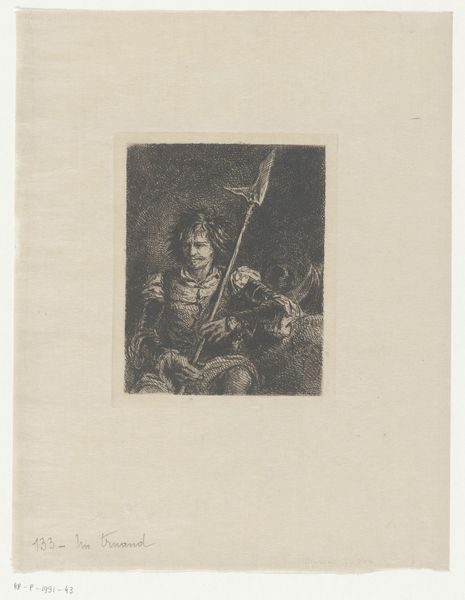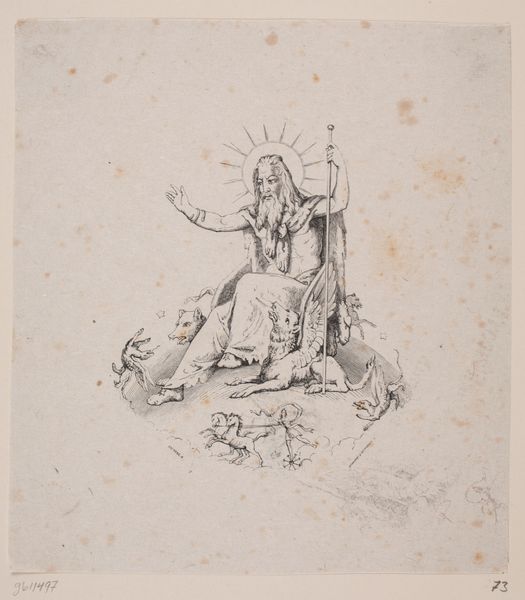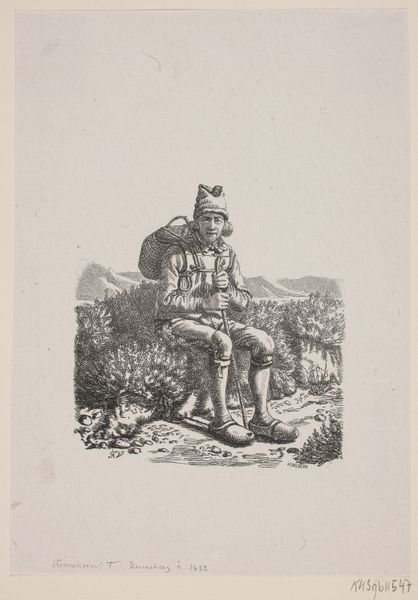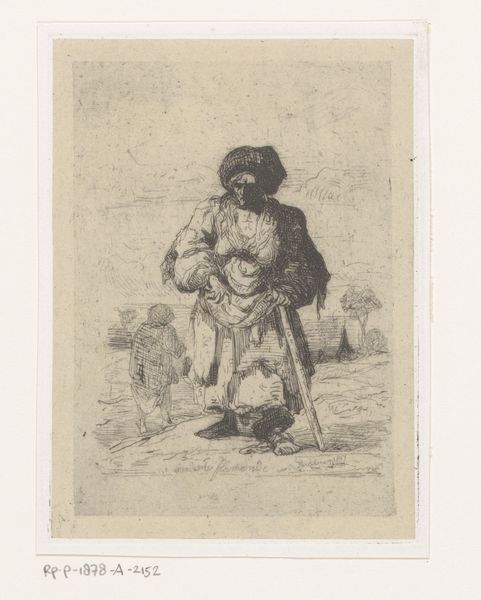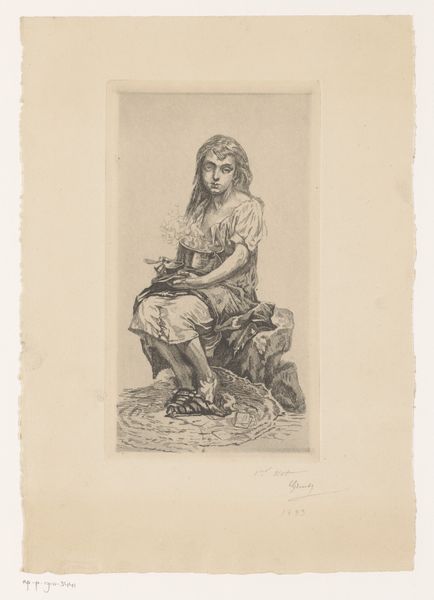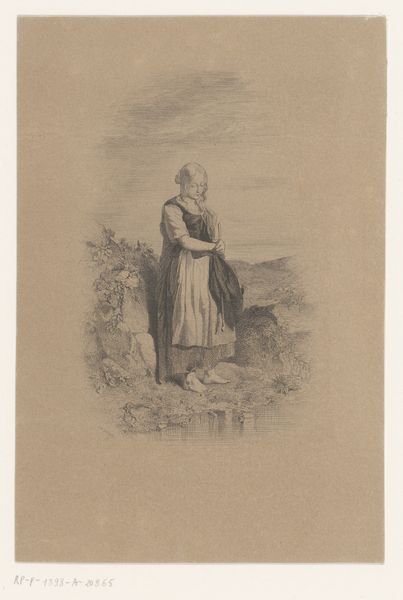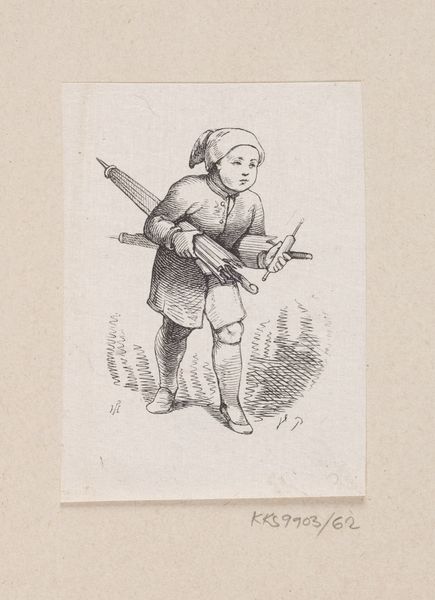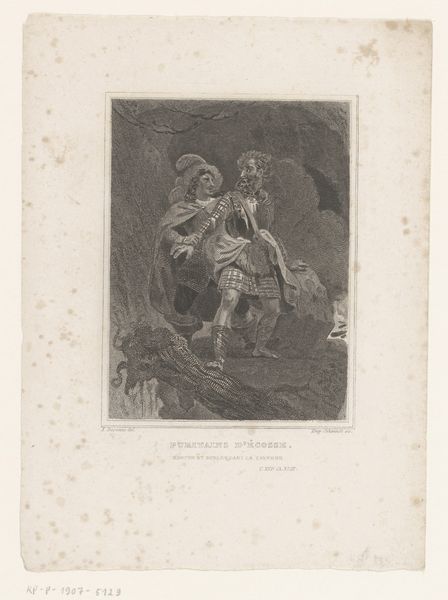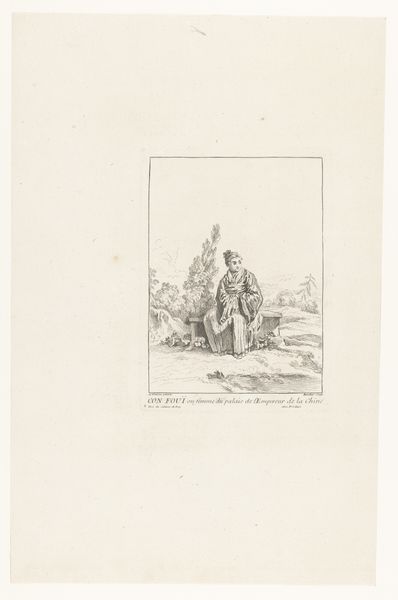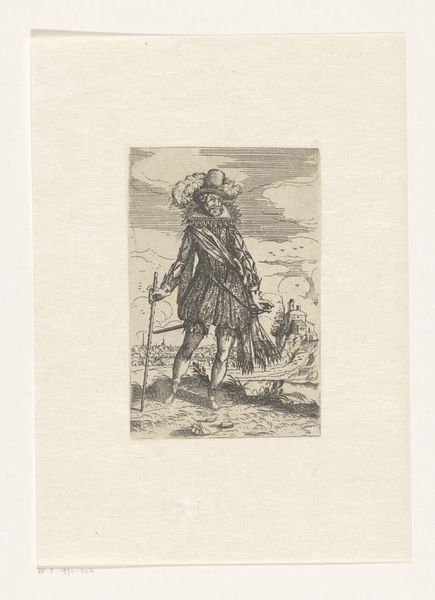
drawing, paper, ink, pen
#
portrait
#
drawing
#
comic strip sketch
#
toned paper
#
baroque
#
old engraving style
#
cartoon sketch
#
figuration
#
paper
#
personal sketchbook
#
ink
#
ink drawing experimentation
#
pen-ink sketch
#
line
#
sketchbook drawing
#
pen
#
genre-painting
#
storyboard and sketchbook work
#
sketchbook art
#
realism
Dimensions: height 200 mm, width 164 mm
Copyright: Rijks Museum: Open Domain
Curator: Here we have Christian Wilhelm Ernst Dietrich’s “Blinde bedelaar,” or “Blind Beggar,” an ink and pen drawing from 1757. What are your initial thoughts? Editor: It strikes me as a study in textures. Look at the roughness of the beggar's clothes contrasted with the smooth surface of the water jug, all rendered so economically with simple lines. Curator: It’s fascinating how this piece fits into broader social trends of the 18th century. There was an increasing awareness, and some would say romanticisation, of poverty, coexisting oddly with the opulence enjoyed by aristocratic patrons who often commissioned these types of genre scenes. Editor: Indeed. Though, observe the formal composition – the positioning of the figure within a contained, almost theatrical space. The use of shadow suggests both depth and a kind of psychological enclosure. He's visually isolated. Curator: That isolation is central to the narrative, and it reflects a shifting understanding of poverty. The blind beggar would have been a very visible part of the urban landscape, serving both as a reminder of social inequality and perhaps as a figure onto which the anxieties of the wealthy could be projected. His otherness made him visible but ignored. Editor: I find the use of line so compelling. There is an incredible dynamism achieved with such limited means. See how the lines create volume in the figure’s form and give depth to the setting! Curator: And remember, the sketch, while seemingly simple, served specific societal functions. Cheap prints made after these sketches became popular with the rising middle class, too, shaping their views of the lower classes. Editor: It does leave me wondering about the degree to which the artist idealized his subject here, framing the man with that classical pose, leaning on his staff... Curator: A worthwhile point—Dietrich was navigating very specific waters of representation and patronage in 18th century Germany. Editor: Examining the formal structure and subtle rendering yields so many more perspectives about art’s potential as social commentary, right? Curator: It's remarkable how a seemingly simple drawing can unlock such rich historical narratives.
Comments
No comments
Be the first to comment and join the conversation on the ultimate creative platform.
